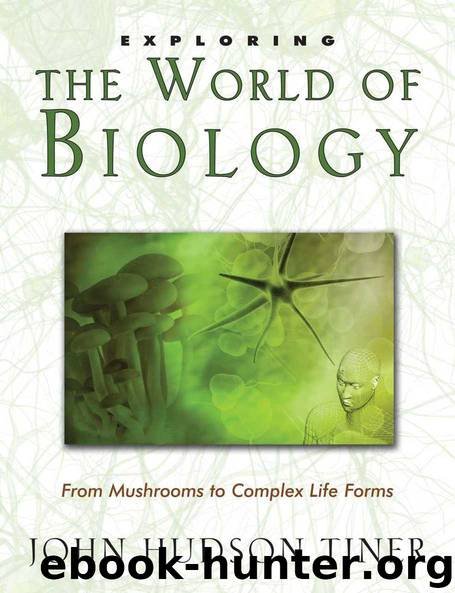Exploring The World of Biology by John Hudson Tiner

Author:John Hudson Tiner [Tiner, John Hudson]
Language: eng
Format: epub
Tags: RELIGION / Christian Education / Children &, Youth, SCIENCE / Life Science / Biology / General
ISBN: 9781614581536
Publisher: Master Books
Published: 2008-10-31T23:00:00+00:00
Jean Henri Fabre became a schoolteacher. He was fortunate to be assigned to a school on Corsica, the fourth largest island in the Mediterranean Sea. The island rose from sea level to almost 9,000 feet. The change in altitude provided a variety of environments for different plants and animals. Corsica’s lush vegetation earned it the name “the scented isle.” When wind blew across the island, the fragrance of the flowers could be smelled miles out at sea. Abundant vegetation also assured an abundant insect population.
During his four years on the island, Fabre developed his style for studying nature. He combined patient observations of living insects with detailed but interesting descriptions of their behaviors. He also taught himself drawing so he could correctly depict what he observed.
The usual practice by biologists was to capture an insect, kill, and dissect it. A dead insect held no charm for Fabre. He said, “You rip up the animal, and I study it alive; you turn it into an object of horror and pity, whereas I cause it to be loved. . . . I make my observations under the blue sky to the song of the cicadas.”
The classification system developed by biologists puts all arthropods with three body segments into the class Insects. The three divisions of an adult insect’s body are the head, thorax, and abdomen.
The head has antennae, compound eyes, and mouth. Biologists are convinced that antennae are sense organs. But do insects use it to detect odors, sounds, or vibrations? Biologists are not certain exactly what the insect uses the antennae to detect.
The thorax, or chest, of an adult insect serves as the attachment for wings and three pairs of legs. Muscles must be anchored on a solid surface so they can pull the legs and wings. Insect muscles are attached to the hard plates of the exoskeleton, a hard outer covering. Wings are made of the same material as the exoskeleton, but it is much thinner and crossed with veins.
The abdomen is the third part of the insect. It has openings, called spiracles, in the exoskeleton for breathing.
Most adult insects have but one goal — to mate and reproduce. Often their lives are short. For instance, mayflies live only 18 hours as adults. Like many other adult insects, they go without food. They don’t even have a functioning digestive system. Insects with short life spans as adults have various ways to find a mate. Mayflies tend to all swarm out on the same night and fill the air. Fireflies use flashing lights on their abdomen. Cicadas make a loud buzzing sound.
Download
This site does not store any files on its server. We only index and link to content provided by other sites. Please contact the content providers to delete copyright contents if any and email us, we'll remove relevant links or contents immediately.
| Adult | Children & Teens |
| Home Schooling |
Habits of Grace by David Mathis(1420)
Anxious for Nothing by Max Lucado(1400)
A Prophet with Honor by William C. Martin(1373)
Peace with God by Billy Graham(1318)
Long Bright River by Liz Moore(1203)
Whisper by Mark Batterson(1156)
Expectation by Anna Hope(1069)
Fortitude by Dan Crenshaw(931)
The Wondrous Workings of Planet Earth by Rachel Ignotofsky(886)
Answers Book for Kids, Volume 3 by Ken Ham & Cindy Malott(873)
Taste and See by Margaret Feinberg(847)
I Declare War by Levi Lusko(840)
If by Mark Batterson(826)
ST01 by Unknown Author(814)
Everybody, Always by Bob Goff(814)
The Case for Miracles by Lee Strobel(800)
The Alpha by Unknown(796)
Power for Living by T. D. Jakes(781)
Your Story Matters by Leslie Leyland Fields(778)
